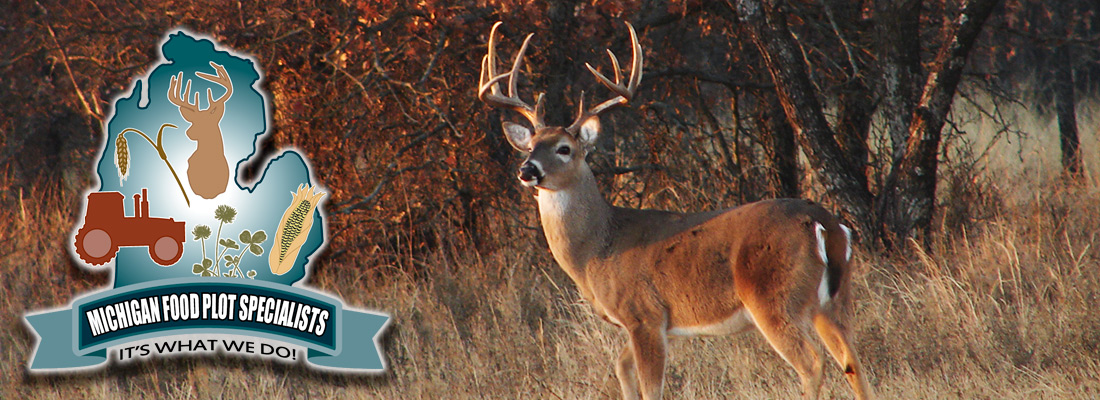Planning Your Food Plot Program
Food plots can be and are a popular activity for land owners with acreage who want to enhance wildlife habitat. The satisfaction of working with the land can often exceed the expectations of hunting and viewing wildlife.
Consistently productive food plots require careful thought and planning before they are implemented.
Five Important Factors to Consider:
Location
Plots should be located on fertile soil with adequate drainage. In Michigan this can be a challenge. In the North much of the quality land is owned by farmers leaving the land owner/food plotter with the leftovers. That usually equates to sandy loamy soil (light soil). Cover should be located nearby or scattered across the plot. Food plots should not be established near a public road or waterway due to the increased possibility of violators.
Size
Plot size and shape may vary with local conditions, but they generally should not be less than 1 acre to ensure adequate sunlight to meet forage production requirements.
Spacing
Plots should be scattered over the entire property, if possible. It is more beneficial to establish 10 plots, 2 acres in size, than to have a single 20-acre field. Cost may dictate total acreage planted.
Soil Testing
To ensure productive food plots, conduct soil tests for fertilization and lime requirements. Your local county extension can provide information on soil sample collection and where to send them for analysis. Be sure to list the potential crops to be grown when sending in soil samples for testing.
Planting
Select a plant species or combination of species that will grow on the particular soil type and site that you have. If unsure, again ask the local county extension, wildlife biologist or a company who provides food plot services. Proper seedbed preparation will increase germination and yield more productive food plots. Plant crops at the prescribed seeding rate and — of course — during the proper planting season.









